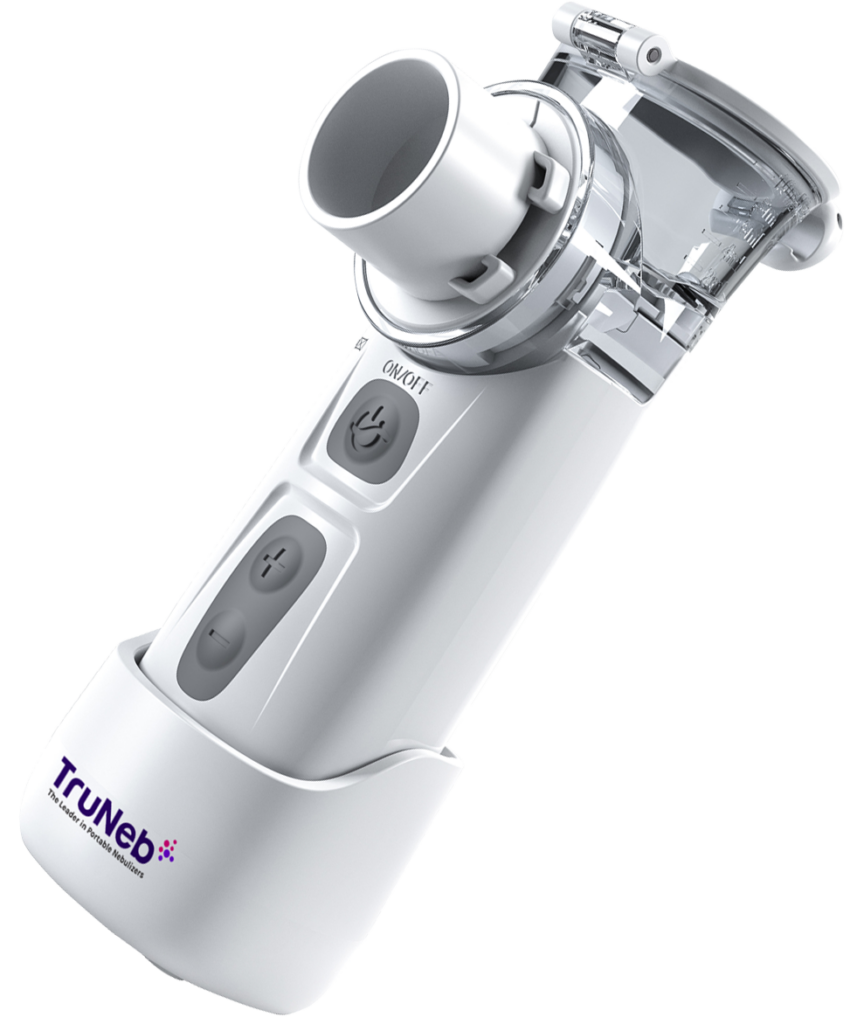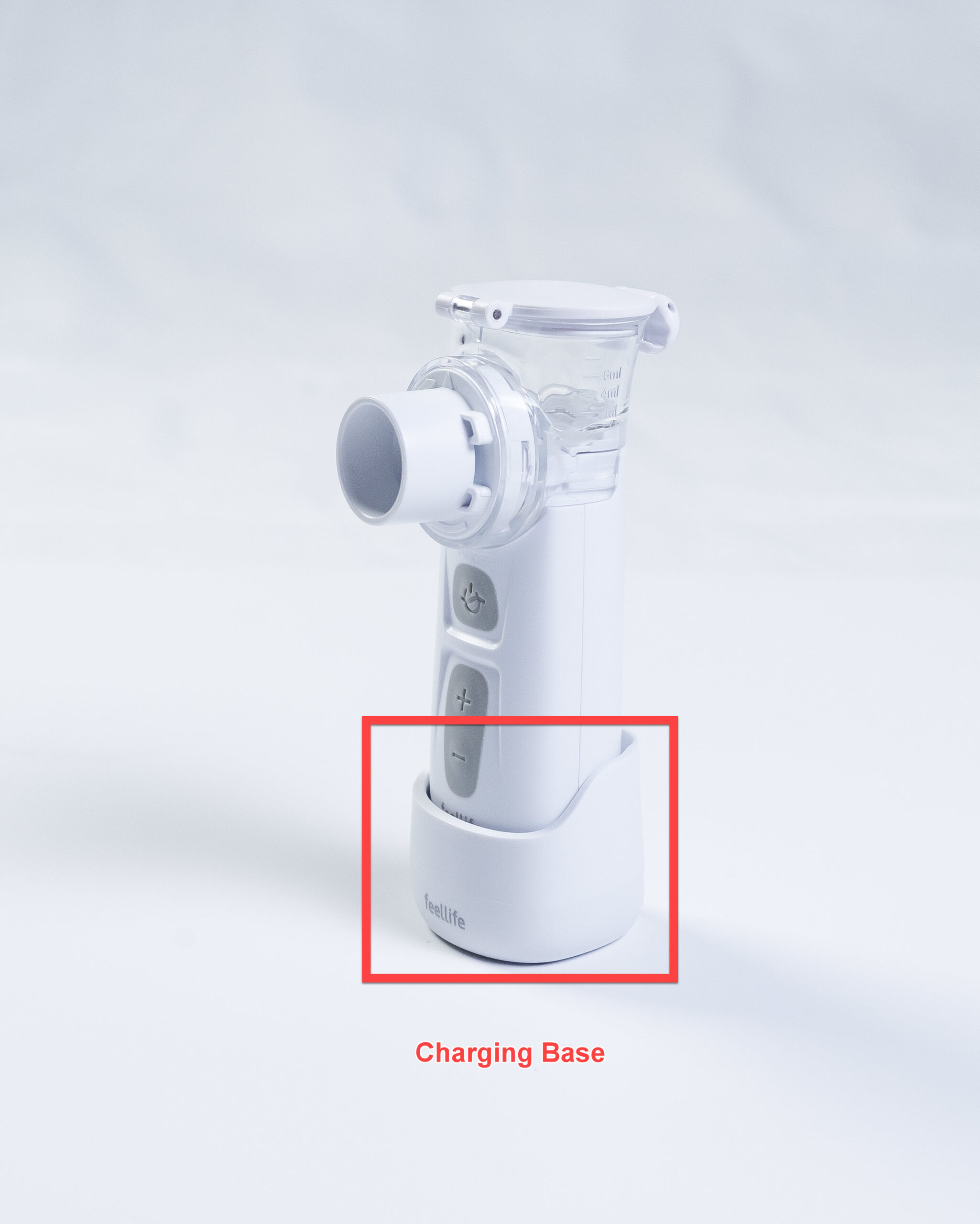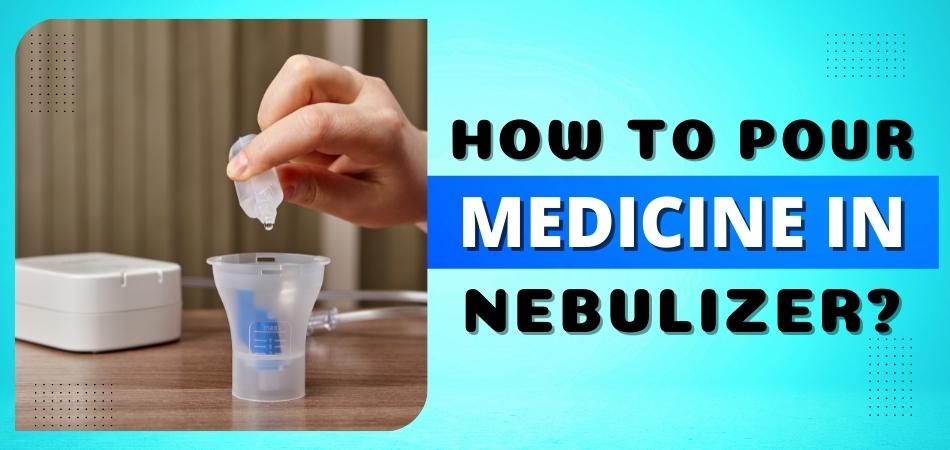If you have COPD, you know that it can be difficult to breathe. Chronic obstructive pulmonary disease, or COPD, is a problem with breathing.
It’s the fourth leading cause of death in the United States. You may feel like you can’t get enough air, and your chest may feel tight.
Sometimes, your COPD symptoms may be so bad that you need to go to the hospital. There is no cure for COPD, but there are treatments that can help make it easier to breathe.
One treatment option is a nebulizer. Nebulizers turn medication into a fine mist that you breathe in.
This helps the medication get deep into your lungs where it can work its best. Learn more about how nebulizers can help with COPD in this blog post.
What Do You Put in a Nebulizer for Copd?
One of the treatments for COPD is called a nebulizer. A nebulizer is a small handheld machine that helps patients breathe in medicine through a mask or mouthpiece.

The medication goes into the nebulizer, which turns it into a fine mist. The patient then breathes in the mist through the mask or mouthpiece. The nebulizer helps the medication reach the lungs more effectively.
There are many different types of medications that can be used with a nebulizer, such as bronchodilators, corticosteroids, and antibiotics. The type of medication used depends on the particular needs of the patient.
The medications used in a nebulizer can be either liquid or powder form. Some common brand names of liquid medications that are used in nebulizers include Pulmicort Respules, Albuterol, and Xopenex.
Common brand names of powdered medications used in nebulizers include Proair Respiclick and Flovent Diskus. Nebulizers can be used with either tap water or saline solution.
When using a nebulizer, it is important to follow the directions that come with the machine. Usually, patients will need to use the nebulizer for about 5 to 15 minutes, depending on their prescribed treatment plan.
It is important to keep track of how often and how long the machine is being used so that doctors can properly monitor the treatment plan. Nebulizers can be cleaned with soap and water, or there may be special instructions from the manufacturer on how to clean the machine.
After each use, it is important to take all of the medicine out of the nebulizer so that it does not get contaminated and cause an infection.
What is the Best Nebulizer for COPD?
If you have COPD, you may benefit from using a nebulizer. A nebulizer is a medical device that delivers medication in the form of a mist, which can be inhaled into the lungs. This type of delivery system is often used for medications that are difficult to take in pill form, such as bronchodilators.
There are many different types of nebulizers on the market, so it’s important to choose one that will best meet your needs. Some factors to consider include portability, ease of use, and cost. You should also make sure that the nebulizer you choose is compatible with the medication you need to take.
If you’re looking for a portable option, the TruNeb™ portable Nebulizer is a good choice. It’s small and lightweight, making it easy to take with you on the go.
This device is FDA-cleared and has been shown to be effective in delivering medication to the lungs. TruNeb™ uses a unique vibrating mesh technology that creates a uniform particle size, which helps the medication to be inhaled more easily and deeply into the lungs.
The TruNeb™ is also very quiet, making it a good choice for use at home or in a hospital setting. In addition, TruNeb™ comes with a carrying case and a corrugated tubing kit, making it easy to transport and store.
The Pari Trek S Compact Compressor Nebulizer is another good option for those who need portability.
It comes with a carrying case and can be powered by either batteries or an AC adapter. For ease of use, look for a nebulizer that has an automatic shut-off feature. This will help ensure that you don’t overmedicate yourself.
The Omron MicroAir NE-U22V Automatic Nebulizer is a good choice if ease of use is a priority for you. It has an LED display and offers both automatic and manual operation modes. Finally, consider the cost when choosing a nebulizer.
How to Use a Nebulizer for COPD?
According to a study, COPD nebulizers can help reduce symptoms and improve the quality of life for patients. (Source) If you or a loved one suffer from COPD, read on to find out how to use a nebulizer for COPD.
A nebulizer is a small, portable machine that turns liquid medication into a fine mist that can be inhaled through a mouthpiece or mask.
Nebulizers are often used to deliver bronchodilators, which are drugs that open up the airways and make it easier to breathe. They can also be used to deliver steroids, which can help reduce inflammation in the lungs.
Using a nebulizer is relatively simple. Here’s a step-by-step guide:
Step 1: Fill the medication cup with the prescribed amount of medication. Be sure to use only sterile water in your nebulizer; tap water can contain bacteria that could infect your lungs.
Step 2: Connect the tubing from the medication cup to the air compressor. Then connect the mouthpiece or mask to the other end of the tubing. If you’re using a mask, put it over your nose and mouth and secure it with straps or an elastic bandage.
Step 3: Turn on the air compressor and wait for the medication to turn into aerosolable particles (this should only take a minute or two). Start breathing slowly and deeply through your mouthpiece or mask; continue until all of the medication has been used up (again, this should only take 5-10 minutes).
After you have finished using the nebulizer, you will need to clean it according to the manufacturer’s instructions. Nebulizers can harbor bacteria if they are not cleaned properly, so it is important to make sure that they are cleaned after each use.
How Often to Use Nebulizer for COPD?
If you have COPD, you may need to use a nebulizer. This device helps you breathe in your medication. People with COPD often use it two or three times a day. Here’s what you need to know about how often to use a nebulizer for COPD.
COPD is a lung disease that makes it hard to breathe. The airways in your lungs are inflamed and damaged. This makes them very sensitive. So, when you have an exacerbation, your airways swell even more.
Some people may need to use it more frequently if they’re experiencing symptoms or flare-ups. Others may only need to use it once or twice a day as maintenance therapy. It’s important to follow your doctor’s instructions when using a nebulizer.
This can make it hard to breathe and get the air in and out of your lungs. That’s where a nebulizer comes in. A nebulizer is a device that delivers medication directly to your lungs in a fine mist. This can help reduce the inflammation and swelling in your airways so you can breathe better.
Make sure you understand how often you should be using it and for how long each treatment should last. If you have any questions, don’t hesitate to ask your doctor or pharmacist for guidance.
Salbutamol Nebuliser for COPD
Salbutamol is a short-acting beta2-adrenergic receptor agonist used to relieve bronchospasm in conditions such as asthma and COPD. It works by relaxing the muscles in the airways, making it easier to breathe. Salbutamol is typically given by inhalation using a nebulizer or an inhaler.

For patients with COPD, salbutamol may be used on a daily basis or as needed for bronchospasm. If you have been prescribed salbutamol, it is important that you follow your doctor’s instructions carefully and use the medication exactly as directed.
When using a nebulizer, the recommended dose of salbutamol for adults and children over 4 years of age is 2.5 mg (3 ml of 0.083% solution) inhaled 3-4 times per day.
For infants and children under 4 years of age, the recommended dose is 1.25 mg (1.5 ml of 0.05% solution) inhaled 3-4 times per day. If you are using an inhaler, the recommended dose for adults and children over 4 years of age is two puffs every four to six hours as needed for bronchospasm relief; do not exceed 12 puffs in 24 hours unless directed by your doctor.
For infants and children under 4 years of age, the recommended dose is one puff every four to six hours as needed; do not exceed 6 puffs in 24 hours unless directed by your physician.
It is important that you shake the canister well before each puff when using an inhaler,. You should also clean your mouthpiece with hot water after each use; never put the mouthpiece directly into your mouth without first rinsing it with hot water.
What is the Best Nebulizer Medication for Copd?
There is no one “best” nebulizer medication for COPD. The best medication for a person with COPD will depend on the individual’s specific condition and symptoms.
Some common medications used to treat COPD include albuterol, ipratropium, and corticosteroids. These medications can be used alone or in combination depending on the severity of the person’s condition.
Nebulizers are devices that convert liquid medication into a fine mist, making it easier for patients to breathe in. This type of device is often used to treat conditions like asthma, chronic obstructive pulmonary disease (COPD), and cystic fibrosis.
There are many different types of nebulizer medications available, and the best one for a particular patient will depend on their individual condition. For example, patients with COPD may benefit from inhaling a bronchodilator medication, which can help to open up the airways and make breathing easier.
Patients with asthma may instead require an inhaled corticosteroid, which can help to reduce inflammation in the airways. Ultimately, the best nebulizer medication for a particular patient will be determined by their doctor.
Conclusion
Chronic obstructive pulmonary disease, or COPD, is a progressive lung disease that makes it difficult to breathe. The airways and alveoli (air sacs) in the lungs become damaged and inflamed, making it hard to get enough oxygen into the bloodstream.
One treatment for COPD is nebulized therapy, which involves using a machine called a nebulizer to convert liquid medication into a fine mist that can be inhaled directly into the lungs.
Nebulizers are often used to deliver bronchodilators, which help to open up the airways and make breathing easier. There is some evidence that nebulized therapy can improve symptoms in people with COPD, but more research is needed to confirm these benefits.
If you’re considering using a nebulizer for COPD, talk to your doctor about whether this treatment option is right for you.
Why Choose the TruNeb™ for the COPD Treatment?
As you know COPD is a lung disease that makes it difficult to breathe. And for the treatment, you need a nebulizer. It will be best if you choose a portable Nebulizer for use.
TruNeb™ is the best portable nebulizer that is easy to use. The simple reason is that it gives you an accurate and quick dose of your medications each time you need them.
Our portable mesh nebulizer machine works for both kids and adults, making it easy for anyone who needs nebulized therapy. Order your own nebulizer now!




